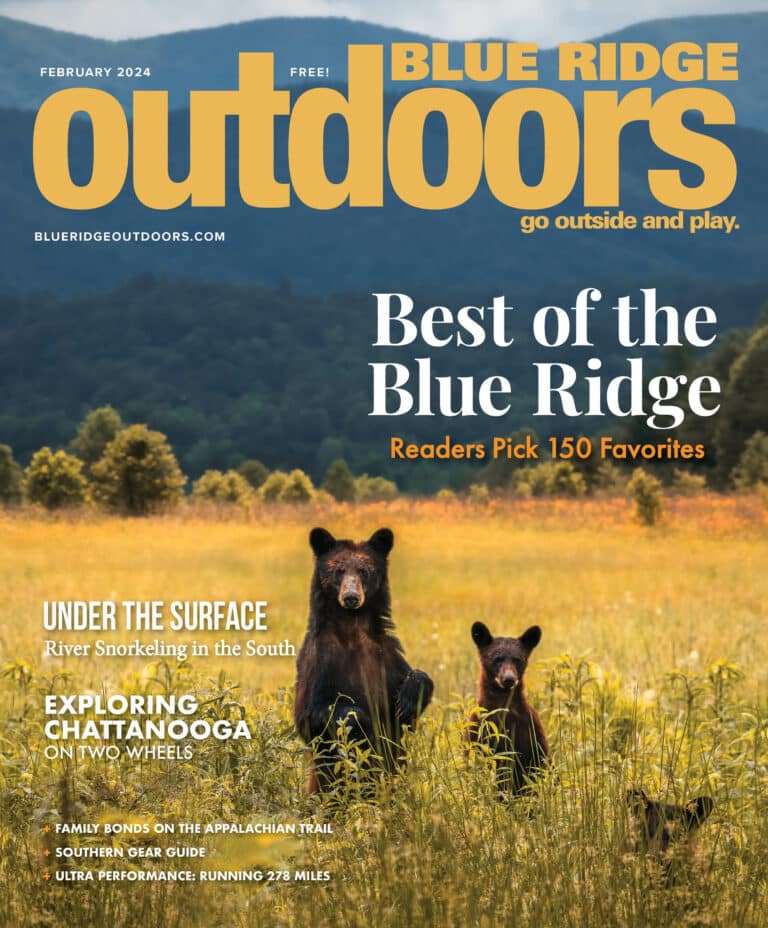After weeks of chasing a rare subspecies of black-and-white ruffed lemurs through the forest of Madagascar, Dr. Asia Murphy had yet to see one in person. She could hear the lemurs communicating with a loud call that “sounds like dogs snarling and demons screaming,” but there was no visual sign of their whereabouts.
Right before she was set to leave the site, Murphy came upon one lying on a branch just off the trail she was hiking. Keeping one eye out for obstacles while trying to be quiet and focus her camera on the lemur, she followed it for about 20 minutes to a larger group. “I was getting such good shots—clear, the lemur looking straight at me—it was great,” Murphy said. “It was only when I left that site and was able to upload the pics that I realized I had overexposed all of them, so they were useless.”
Anyone who has ever tried to photograph wildlife….knows that it takes a little bit of luck and a lot of patience to get the focus, exposure, and framing to all come together.
It’s a tough lesson that every photographer learns at some point in their career. Anyone who has ever tried to photograph wildlife—the slither through the grass, the flight from a perch, or the shimmy up a tree—knows that it takes a little bit of luck and a lot of patience to get the focus, exposure, and framing to come together.

That experience didn’t dissuade Murphy from the medium. In fact, she doubled down on learning the camera’s functions, honing her skills to be able to get clearer images in the field. As she grew more comfortable behind the lens, she started exploring the ways in which photography could provide new perspective on animal studies.
As an ecologist, photographer, and writer, Murphy knows how rigorous it is to take a perfect photo. “I’m lucky if I get one or two good shots per 100 pictures I take,” she said. Yet her results are stunning, offering close looks human eyes are unable to perceive.
Murphy’s interest in animals and the natural world started at a young age on outings with her dad. As an undergrad studying fisheries and wildlife science at North Carolina State University, she got her first taste of field work on the prairies of Minnesota, catching animals to figure out what they were eating. “Even though I hated the ticks, I loved interacting with and learning about the mice and voles,” Murphy said. The desire to better understand the way species interact with their environment led her to a Ph.D program in ecology at Pennsylvania State University.

Studying everything from fawns in the state forests of Pennsylvania to fossa and lemurs in Madagascar, Murphy uses noninvasive techniques to better understand and conserve threatened species around the world.
One of her primary modes of data collection is through camera traps, which take a photo every time an animal walks past a sensor. Dozens of cameras are deployed around the habitat, baited with scent attractants. “It’s one of the better methods to study wildlife because it’s less stressful for an animal to get its picture taken than it is to get caught and GPS-collared,” Murphy said. It’s also an effective way for scientists to study rare species or species that are hard to observe in person.
Based on the photos, Murphy can figure out what kinds of habitats certain species prefer and the dynamics between species in an environment. “Species tend to avoid interacting with other species by using different areas or being active at different times of the day,” she said.

However, adding humans to the mix can disturb that balance. “When we’re in natural habitat, wildlife knows, and they’ll avoid the areas we’re in. If there’s enough of us, they’ll even become more nocturnal,” Murphy said. “This cuts into the available ‘space-time’ wildlife has to avoid other species. It’s like a pie, and we’ve taken half of it, and left the rest for species to share.” Knowing these patterns can help researchers design better plans for coexistence in a shared space.
From this field work Murphy’s interest in photography grew. Although she typically studies mammals, she’s become fascinated with shooting bees, after learning their eyes are faceted and can be different colors. With that information, she dove into the world of macro photography on a quest to capture bees in the wild. “To get good at the bee pictures, I had to do research on them, and that made me want to start studying them,” she said. Murphy is now in the process of designing a project to better understand how to make communities more bee-friendly. She’s focusing on what makes some bees thrive better in cities versus others based on the habitat they nest in and when they’re active.

When she’s photographing the details of animals, especially arthropods like bees, Murphy uses a Laowa 100mm f/2.8 2x Ultra Macro lens. Working with a macro lens allows her to capture a variety of species at different sizes while maintaining a high level of sharpness. For larger species, especially snakes, she uses a long lens like a Pentax 300mm to maintain a safe distance.
Whether she’s shooting a bee’s eye or a frog resting on a leaf, Murphy wants to emphasize a uniquely creative intersection of art and science. “I love being able to see details you couldn’t see without killing the thing and putting it under a microscope or magnifying glass,” she said.
You can learn more about Murphy’s work online at AsiaJMurphy.com or follow her on Twitter for interesting animal facts @am_anatiala.
Cover photo: A Certaina, small carpenter bee stops on a purple aster. Photo by Murphy








